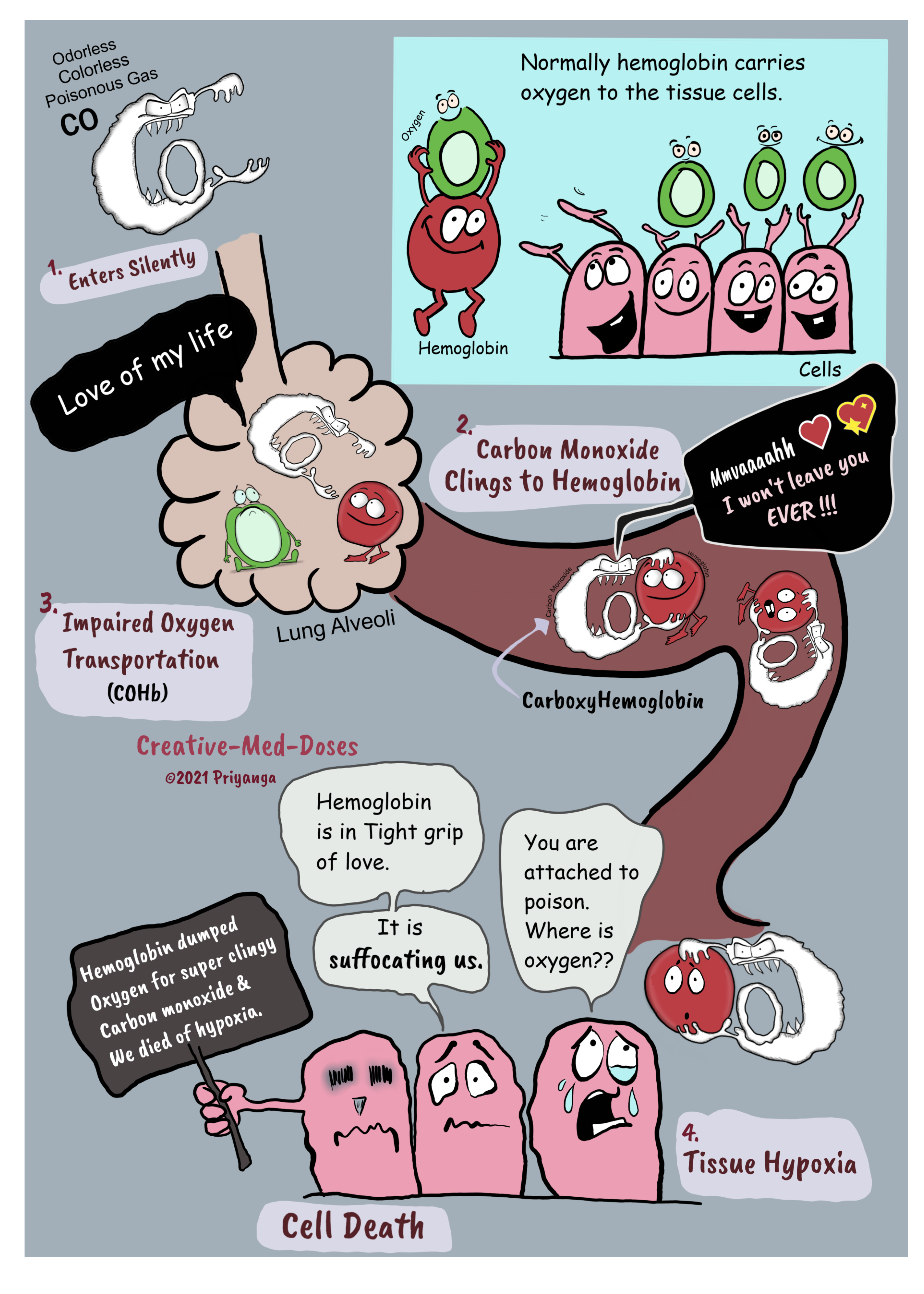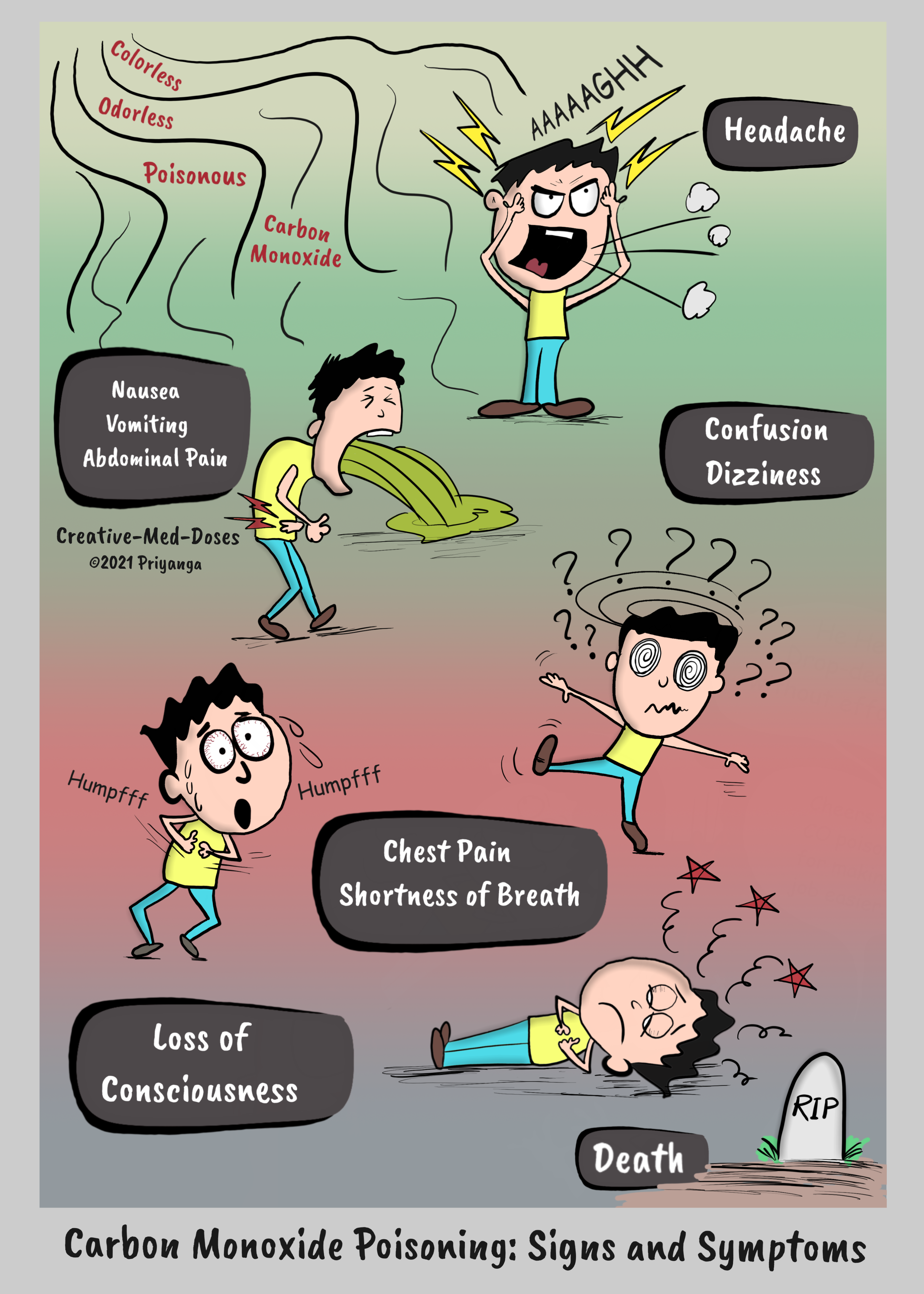Carbon monoxide (CO) poisoning: the silent killer
Carbon monoxide (CO) is an odorless, tasteless, and colorless gas that can cause sudden illness and death if inhaled.
CO is generated in the incomplete combustion of carbon compounds. And the common sources include fire, engine exhaust, and faulty furnaces.
Its victims, in general, become unconscious before they realize they have inhaled life-threatening odorless and colorless gas.
Risk factors
- Wood burning heaters
- Poorly ventilated buildings
- Use of charcoal, gas, or petroleum
- Faulty furnaces
- Motor vehicle exhaust
- Inhalation of methylene chloride from paint thinners
Pathogenesis
Absorption of inhaled carbon monoxide occurs in the gas exchange region (alveoli) of the respiratory tract following inhalation.
It displaces oxygen from hemoglobin and causes tissue hypoxia.
Most carbon monoxide binds reversibly to hemoglobin (Hb) in red blood cells and other heme proteins. Carbon monoxide's affinity for hemoglobin is 200–250 times greater than that of oxygen.
After binding to Hb to displace oxygen and form carboxyhemoglobin, carbon monoxide is transferred rapidly throughout the body, where it causes cellular hypoxia and asphyxia.
Dissociation and excretion of carbon monoxide occur rapidly after cessation of exposure.
Binds to cytochrome oxidase and impairs electron transport chain leading to cellular hypoxia and reduced ATP generation, cell injury, and cell death.
Cardiovascular injury can result from carboxymyoglobin formation and vasodilation from the cellular effects of carbon monoxide.
Clinical neurological effects and any delayed neurological complications are due to cellular hypoxia. The cellular lipid peroxidation also increases neuronal injury, brain edema, and neurological dysfunction.
How much is too much?
According to the World Health Organization, levels greater than six ppm are potentially toxic over a longer period of time.
The COHb levels of 2% or more in nonsmokers and 10% or greater in smokers are considered potentially harmful and likely to produce symptoms.
...

...
Clinical Signs and Symptoms
Headache
Dizziness and confusion
Nausea and vomiting
Shortness of breath
Altered mental status
Cherry-red skin (late finding)
Coma, Loss of consciousness, Death
Cardiovascular complications
- Myocardial injury
- Myocarditis
- Arrhythmia
Neurological complications
- Impaired memory
- cognitive dysfunction
- depression
- anxiety
- vestibular and motor deficits
....

....
Diagnosis
CO poisoning has a clinical triad of the following-
- Symptoms consistent with CO
- History of recent CO exposure
- Elevated COHb levels
Treatment
Start treatment within 6 hours of poisoning for the best outcome.
- Remove the person from CO exposure
- 100 % oxygen to displace CO from hemoglobin- – supplemental oxygen should be started as soon as possible and continued till the patient gets better.
- In case of neurological deficit Hyperbaric oxygen is used
Read a very interesting medical fiction story about Carbon monoxide poisoning here Medical Fiction: John & the Scrubber | Physician's Weekly (physiciansweekly.com)
I highly recommend reading medical fiction stories because they are entertaining. And also, a great source to memorize few things on medical ailments.
Revision for today Calciphylaxis or calcific uremic arteriolopathy in CKD - Creative Med Doses